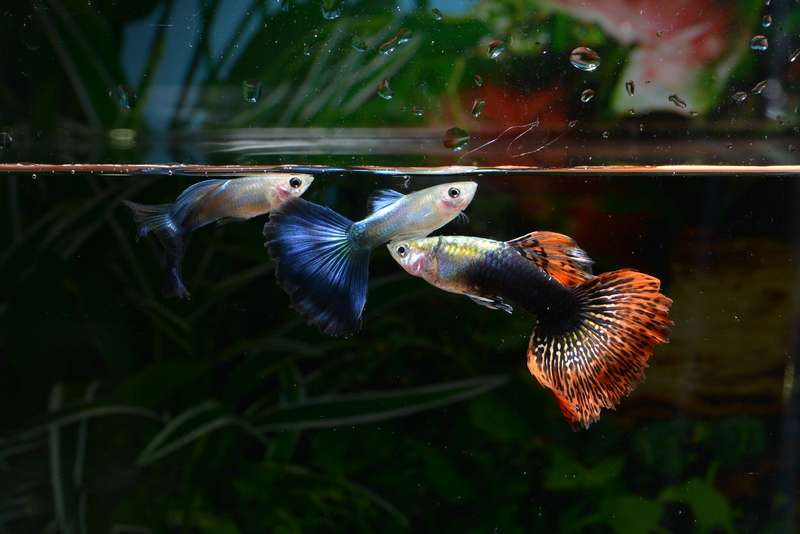Guide to Maintaining a Freezer for Extended Non-Use
Posted on 26/06/2025
Guide to Maintaining a Freezer for Extended Non-Use
Properly maintaining a freezer during long periods of non-use is essential for keeping your appliance in top condition. Whether you're leaving for an extended vacation, closing a vacation home for the season, or putting your unused freezer in storage, following best practices for freezer care will help extend its lifespan and ensure efficiency when you need it again. In this comprehensive guide, we'll discuss the necessary steps to prepare, protect, and maintain a freezer for extended periods without use.
Why Proper Freezer Maintenance Matters During Non-Use
Ignoring your freezer when it's not in use can lead to issues such as mold, mildew, bad odors, mechanical failure, or even pest infestation. Proper care not only protects your investment but also ensures food safety and convenience when it's time to use the freezer again.
- Prevent foul odors and bacteria buildup from leftover moisture or food particles
- Reduce risk of corrosion or rust in key components
- Ensure optimal functionality upon reuse
- Extend the overall appliance lifespan
- Save time and maintenance costs in the long run

Essential Steps to Prepare Your Freezer for Extended Non-Use
1. Thoroughly Empty the Freezer
For best results in keeping a freezer safe during prolonged non-use, remove all food items. Do not leave anything behind, as even small appetizers or ice cubes can create a mess or cause odors once thawed.
- Transfer perishable foods to another working freezer, if possible.
- Dispose of any spoiled or old foods sensibly.
- Check for forgotten items, especially in drawers or baskets.
2. Defrost the Freezer Properly
Defrosting is a critical step in freezer maintenance for extended closure. Ice build-up can lead to water leakage, internal rusting, or microbe growth.
- Unplug the freezer before starting the defrost process.
- Place towels around the base to catch meltwater.
- Leave the freezer door open or remove it if storing the unit for more than a few months.
- Wipe up all melted water promptly to prevent puddles or slipping hazards.
- Allow enough time for any accumulated ice to melt naturally--don't use sharp objects to chip away at it.
3. Clean the Interior & Exterior Thoroughly
To protect your freezer during a period of inactivity, deep cleaning is vital:
- Use a mixture of baking soda and warm water (about 1-2 tablespoons per quart of water) to scrub all surfaces, including trays, shelves, and drawers.
- Pay attention to corners and gaskets where spills can hide.
- Dry all components thoroughly. Moisture can cause mildew, mold, and rust.
- Wipe the exterior to remove dust and grime.
4. Deodorize the Freezer
For long-term freezer freshness, consider these tips:
- Place an open box of baking soda inside the unplugged, cleaned freezer to absorb odors.
- Alternatively, use activated charcoal or a pan of dry coffee grounds as a deodorizer.
- Never use strong-smelling chemicals or cleaners. Their lingering scent can transfer to food upon reuse.
5. Ensure Total Dryness
Any remaining moisture is the enemy of a freezer in storage. For extended freezer downtime:
- Air out the interior for at least 24-48 hours.
- Position the freezer at a slight tilt to let any residual water drain toward the door.
- Wipe around gaskets and seals, which often trap moisture.
6. Protect the Door Seal (Gasket)
The gasket or rubber seal around the freezer door is vital for energy efficiency and insulation. For freezer preservation during long periods of inactivity:
- Inspect for cracks, mildew, or food buildup.
- Clean with mild soapy water and dry thoroughly.
- To keep the seal pliable, a small application of petroleum jelly can help.
- Leave the door ajar using a rolled-up towel or a purpose-built spacer (many freezers include clips for this).
7. Secure Power Cord and Components
For safety and convenience:
- Coil and secure the power cord to prevent tangling or damage.
- Use cable ties or attach the cord to the back of the freezer.
- Ensure removable components such as baskets or drawers are clean and dry. Store them inside the freezer if there's space, or pack separately with the unit.
8. Prevent Pest Intrusion
Unplugged freezers can attract rodents or insects, especially if stored in basements, garages, or outdoor sheds.
- Leave the door slightly open to allow air circulation and prevent condensation.
- Place mesh screens or netting over door openings if the unit will be stored in areas prone to pests.
- Regularly check the appliance for signs of unwanted visitors.
Where and How to Store an Idle Freezer
Ideal Storage Conditions
To maximize freezer longevity during extended non-use, choose a location that is:
- Clean and dry
- Out of direct sunlight and heat sources
- Temperature-controlled if possible (best between 50-85?F / 10-30?C)
- Free from excess humidity to reduce rust risk
- Away from corrosive substances or cleaning chemicals
Protecting the Exterior
- If storing in garages or sheds, consider a protective appliance cover or breathable tarp.
- Leave space around the freezer for air flow; don't push it flush against walls.
- Keep off damp floors by elevating on boards or pallets, especially in flood-prone zones.
Disabling the Freezer for Storage
- Unplug the freezer from the power source.
- If the freezer has a water line (auto ice-makers), disconnect it and ensure no residual water remains in hoses or connections.
- Label or tape the plug to prevent accidental reconnection.
Regular Checks During Long-Term Freezer Downtime
Even when not in use, your freezer needs occasional attention. Schedule periodic inspections--monthly is ideal for long-term storage. During each check:
- Ensure the door is still propped open and air is circulating.
- Check for pests, dust, or moisture buildup.
- Verify no mold growth or foul odors have developed.
- Dry any condensation inside and refresh deodorizer materials.
Preparing a Freezer for Use After Extended Non-Use
When you're ready to reactivate your freezer after it's been unplugged for months or even years, follow these steps:
- Re-clean the interior: Even if thoroughly cleaned before storage, give the inside a quick wipe with a mild, food-safe cleaner.
- Inspect gaskets and seals: Ensure the door closes tightly, and the rubber is still soft and intact. Replace seals as needed.
- Plug in and test: Reconnect to power and let the freezer cool for several hours (ideally overnight) before loading food.
- Replace baking soda or other deodorizers to keep odors at bay.
- Remember, never overload the freezer immediately--allow it to achieve stable cold temperatures first.
Common Mistakes to Avoid in Long-Term Freezer Storage
- Leaving any food or ice inside: This is the most frequent cause of odors, mold, and damage.
- Failing to prop the door open: A sealed, moist environment is a breeding ground for mildew and bacteria.
- Storing in high humidity areas without precautions: Rust and internal component damage can result.
- Neglecting periodic inspections: Small issues can develop into costly problems over months.
- Using harsh, scented cleaners: Chemical residues can linger and affect future food storage.
FAQs: Caring for a Freezer During Extended Non-Use
Should I leave my freezer unplugged for long-term non-use?
Yes, it's safest to unplug your freezer during any extended period of inactivity. This protects against electrical hazards, power surges and reduces unnecessary energy costs.
Is it ok to store a closed freezer unplugged?
No. Always leave the door partially open to prevent mold, mildew, and odors. Use a spacer, cloth, or built-in latches if available.
Do I need to cover my freezer during non-use?
Covering is recommended if the unit will be in a dusty or pest-prone environment. Use a breathable fabric; never cover with plastic tightly, as trapped moisture can cause rust.
How often should I check my idle freezer?
Inspect at least every month, especially if stored in an unheated, humid, or pest-prone area.

Summary: Key Takeaways for Freezer Maintenance During Long-Term Non-Use
- Remove all foods and defrost fully to eliminate water and ice.
- Clean and dry all surfaces to prevent smells, bacteria, and rust.
- Leave the freezer door ajar to prevent moisture and mold inside.
- Store in a dry, cool area raised above floors where possible.
- Inspect periodically and refresh deodorizers as necessary.
- Clean again and inspect seals before putting back into active use.
Final Thoughts: The Importance of Freezer Care During Extended Inactivity
Following these steps will protect your freezer, save you money, and ensure you avoid unpleasant surprises after weeks, months, or even years of non-use. Investing a few hours in proper preparation can yield years of reliable service. Refer back to this guide any time you need trustworthy advice on long-term storage and maintenance of your freezer.
If you keep your freezer in good condition during extended downtime, you'll guarantee peak performance and efficiency for all your frozen food needs in the future.
```
_result.jpg)





